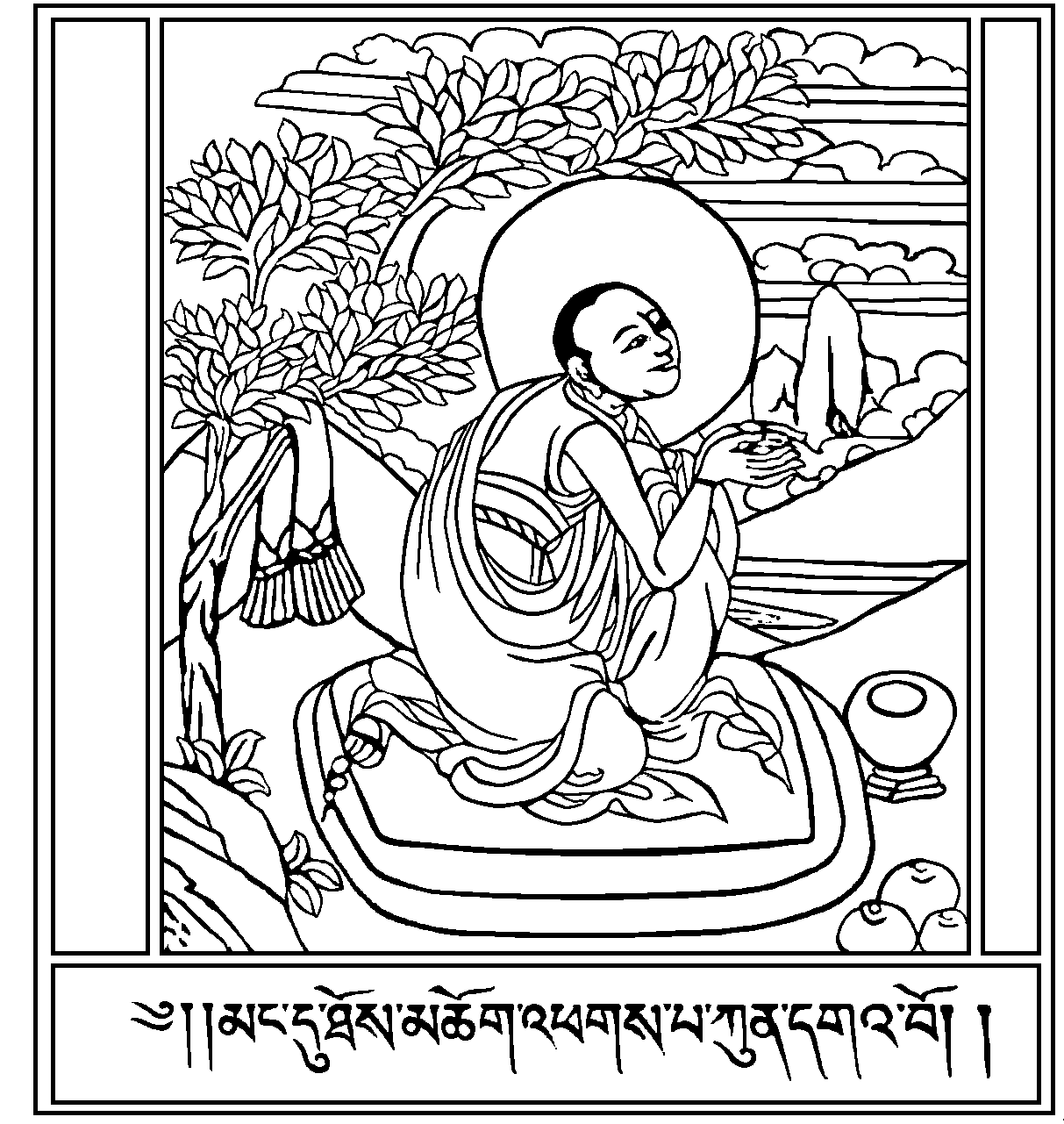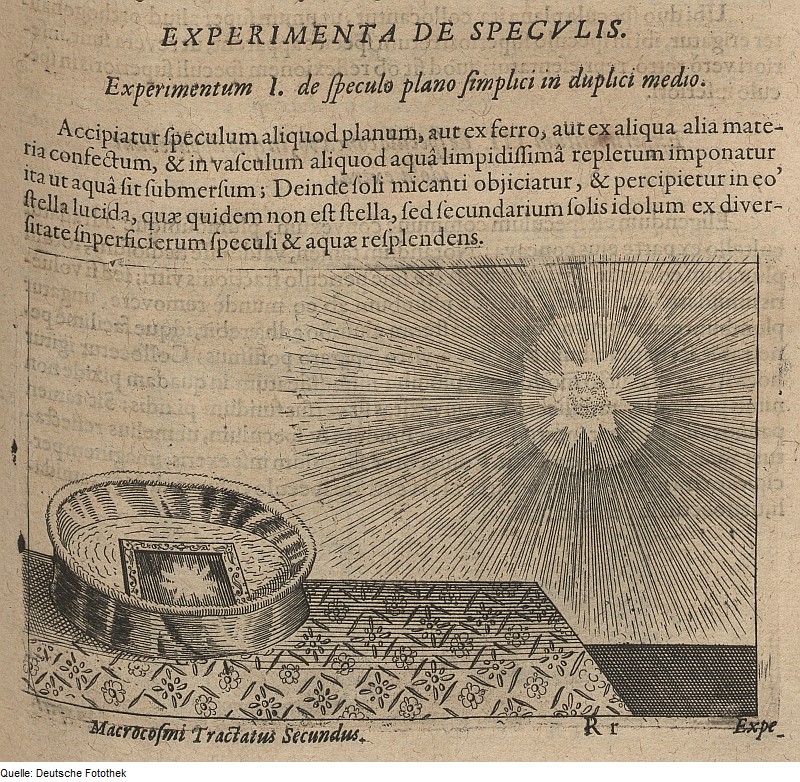 |
| Santosha is contentment in any situation |
The Agnostic Yogi
Modern yoga discussed in plain words
Friday, September 4, 2015
Santosha - cultivating happiness
Sunday, October 5, 2014
Shaucha - cultivating a pure and simple life
śaucāt svāṅga-jugupsā parairasaṁsargaḥ
Purity is the result of cleanliness, by limiting our contact with material transient things, and by developing pure relationships.
The word shaucha (शौच) is derived from the Sanskrit root word ‘shuch’, which means to cleanse or to purify. Shaucha is translated as purity and cleanliness. As the first niyama, it prescribes a personal conduct of cleanliness in relationship to our body, surroundings, thought and behaviour, and combines both external and internal purity. Applied to external purity, shaucha includes the personal hygiene and health regime. There are a number of Kriya yoga techniques that extend personal hygiene beyond the most common ablutions such as brushing teeth. These include jala neti (nasal irrigation) and kapalabati (forceful exhalations) cleaning sinuses and lungs. Applied to internal purity, shaucha is focused on maintaining the health and fitness of our body, which is in large parts reflects the quality of our diet, the purity of water we drink and the air we breathe. There is also a direct relationship to the fitness regime we exercise to keep our body strong and flexible. In this respect, a regular practise of asana (postures) and pranayama (breath control) play an important role in the concept of shaucha.
In Hinduism and Buddhism shaucha is also listed as a yama, because shaucha is equally concerned with our conduct towards our surroundings. Cultivating a capacity for discrimination and purity in our thoughts and speech is an important prerequisite for dealing with others in a fair and compassionate manner. For this reason, shaucha is closely connected with ahimsa, as thoughts become words, and words action and reaction. Mahatma Gandhi is a prominent yogi who extended shaucha towards public health and hygiene by investing and promoting sanitation, waste removal, healthy food, and access to clean water and air.
Shaucha is much more than a reminder for personal health, hygiene, and a tidy household. On a more abstract level shaucha is to help us discriminate the impure and transient from the pure and permanent. The practice of shaucha thereby is a tool to reveal what needs constant maintenance, as opposed to things and acts that are intrinsically pure. Purity in the world we life in comes in many shapes and forms. There is perhaps nothing more pure than elements, in Vedic tradition earth, water, fire, air, and space. The mind can reflect these elements; it is one inexhaustible space, with thoughts fast as wind and a fire shining lights on all things perceived. Experiences form the soil of reasoning and understanding, while currents of emotions can be likened to the element of water.
A focus on the intransient essence of things is best realised in a life of simplicity. By simplicity, we limit distraction of our senses and emotional attachment to things superficial. In this respect, shaucha is also closely linked to the aparigraha. Ultimately, purity and simplicity result in personal contentment, the second niyama santosha.
 |
| Shaucha is cultivating a pure and simple life |
Niyama - personal development
 |
| Niyama are guidelines towards personal growth |
Thursday, July 3, 2014
Aparigraha - harmony between your needs and wants
aparigraha-sthairye janma-kathaṁtā saṁbodhaḥ
Absence of greed provides knowledge concerning the reason of our earthly existence.
Aparigraha is the fifth yama, and perhaps the most important one in our increasingly materialist and complex world. In its essence, it emphases the absence of a greed for ownership. Key to the concept of aparigraha is that any possession, or more specifically the desire to possess, leads to attachment and fear of loss, thereby causing suffering.
There is an important difference in owning utilities desirable for a secure and healthy life, and possessiveness. Every life has basic needs such as shelter, clothes, food, health, and it must aim to secure those. However, anything beyond what is actively used is associated with a desire for, and pleasure in owning for the sake of owning, for exclusiveness. Alternatively, it can reflect insecurities and a fear of loss. The desire of ownership and exclusiveness is never fulfilled, and the fear of loosing is only increased by wealth accumulation.
All possessiveness leads to attachment and suffering. This is because owning things always results to some extent in these things owning us, consuming our thoughts, time, and effort. On the most materialistic level, there is this tendency in most of us to collect and own what we consider beautiful, desirable. Unrealized dreams are often lived by 'Ersatzbefriedigung' - proxy experience, something that advertisement is most knowledgeable of fueling in us. For example, our desire to experience nature is converted into the ownership of expensive 4WDs, outdoor gear, and other gadgets that possibly distract from the very tranquility of it. Similarly, the idea of domestic happiness is projected into house ownership. In reality, the high price associated with paying off mortgages and long commutes to work can adversely impact families and the quality of individual lives and relationships.
Possessiveness can extend beyond material things to a desire to own people, exert power over them, an expectation of unconditional loyalty. Greed can also be extended to non-material things, such as social standing. We are mostly living in a work environment that expects people to think in terms of a career ladder that needs to be climbed. We are encouraged to think strategically of where we want to stand professionally and socially in 1 year, 3 years, 10 years. While regular reflection on where we stand in our life and what should be improved to better address the needs of ourselves and those around us is a good thing, obsession with social and professional standing will invariably shift our focus from being to becoming, from presence to the uncertainty of future and cause associated stress.
Greedlessness is non-attachment to material things and concepts. This includes our body. Our society is obsessed with bodily perfection, the dream of eternal youth. Many practitioners of yoga are drawn to the physical exercises, the asanas, to achieve a perfect body. While a healthy body is a great tool, from a holistic yoga perspective it is not more than that - a tool. Obsession with our physical bodies also results in suffering, in fear of death or abinivesha.
The beauty of aparigraha is the instant peace of mind, freedom and happiness it can bring when we stop chasing things, giving up what we don't presently need. Life just becomes simplified, there is more presence in what we do, more space in how we life, more courage in how we dream. By practicing aparigraha, we become instantly rewarded with more of what we need in any stage of life and we will find more time to enjoy it.
 |
| Aparigrapha is harmony between present needs and wants |
Saturday, June 15, 2013
Brahmacharya - harmony between lived and ultimate reality
ब्रह्मचर्य प्रतिष्ठायां वीर्यलाभः ॥३८॥
brahma-carya pratiṣṭhāyāṁ vīrya-lābhaḥ
Performing action with an awareness of a higher ideal is the opposite to work in order to achieve a particular result. This attitude can lead to a more efficient and fulfilling life.
Brahmacharya is the fourth yama, and perhaps the most contentious and misunderstood. In Hindu, Buddhist and Jain monastic traditions, brahmacharya is generally used to refer to the practice of self-mastery of sexual energy in thought, speech and deed. In these and other religious traditions, celibacy is often considered a prerequisite for spiritual practice. However, if the five yamas are to be understood as universal concepts and absolute values underlining the harmonious and sustainable growth of society and life in general, any interpretation of brahmacharya as sexual abstinence makes little sense. Sex and procreation is at the very basis of humanity at large, and most life in general.
There could be a historic explanation for traditional commentaries that equate brahmacharya with celibacy. In the Manu Smrti and later classical texts in Hinduism, brahmacharya is used as a technical term referring to the phase of life before marriage when students of the dvija castes went to live and study in the household of a spiritual teacher. Practicing a life of strict celibacy was deemed a prerequisite in these circumstances.
Brahmacharya is derived from two words of Sanskrit roots: 'brahman' (ब्रह्मन्), and 'char' (चर). Brahman refers to the source, the ultimate reality behind all changing appearances, the omnipresent substrate from which all things originate and to which all return. Brahman is interpreted as the inexhaustible source of all creativity reflected in forms and life continuously manifesting, always moving, changing, never idle or ending. The term 'char' itself means 'to walk, to move, to live'. In this light, the most literal translation is also the most expansive understanding of brahmacharya. Vimala Thakar in "Glimpses of Raja Yoga: An introduction to Patanjali's Yoga Sutra" argues that brahmacharya simply refers to a life dedicated to the perception, understanding and awareness of brahman.
How can awareness of brahman be translated into a way of living? First of all, seeing brahma in everything can be an important means to self-realisation and a source of compassion. Realising oneself is also living up to one's full potential. Today one would say striving for excellence in all one's actions. It is interesting to note that this concept of being the best one can be, of realising the highest human potential, has also been discussed in ancient Greek philosophy using the term 'arete' (ἀρετή). Aristotle in the "Nicomachean Ethics" describes arete as the firm disposition of the mind determining the best choice of actions and emotions in any given situation. Homer equates arete with effectiveness. Whether by moderation in all things sensual, or by striving for excellence and effectiveness in one's actions, both arguably lead to the conservation of energy for meditation and higher purposes.
 |
| Brahmacharya is harmony between perceived, lived and ultimate reality |
Monday, April 1, 2013
Asteya - harmony between merit and appropriation
asteya-pratiṣṭhāyāṁ sarvaratn-opasthānam ||37||
Once non-stealing (asteya) has been permanently established, all riches will be available.
Asteya is the third yama and generally translated and summarised as 'non-stealing', 'non-coveting' or 'non-hoarding'. Honesty is central to the concept of asteya (अस्तेय), a term derived from the Sanskrit root 'steya' – to steal, with the prefix 'a' indicating practice of the opposite. In yoga tradition, asteya is more than a commandment along the lines of "thou shall not steal". It describes the mindful exploration of the process of appropriation, of acquisition of material and non-material goods. This is followed by an investigation of our needs and motives to possess something which is further discussed in the fifth yama aparigraha.
Stealing is the appropriation or withholding of something from others without a moral right to do so. We gain the fundamental rights of acquisition and ownership by work and merits such as invention and authorship.
How can asteya be applied to our modern society? Let us first look at examples of unjust appropriation. Today, perhaps the most common act of withholding something from others is tax evasion, the refusal to share personal wealth with the society that helped to create it by providing the basic infrastructure, education, security, and other resources. Another example receiving increasing attention and debate in today's information society is the theft of ideas in the form plagiarism and copyright infringement. Plagiarism is the appropriation of somebody's language, thoughts, or ideas, without crediting the owner of the original work.
A more complex application of asteya in today's consumer world is the use and misuse of credit. The very nature of credit or debt is that we have not yet earned what we appropriate or consume. Taking up a credit can be a necessity for investing into future growth, helping to build the foundations of a business enterprise, or a public infrastructure project likely to result into tangible dividends which will repay the original investment. However, credit is often being misused by individuals and institutions to afford a lifestyle and spending behavior that is unmerited. Many nation states take up ever increasing mountains of debts to pay for unsustainable budgets and entitlements to please their electorate. Living in debt causes suffering expressed in numerous forms of stress and the need to satisfy the demands of our creditors. Debt is thereby significantly limiting personal freedom and undermining independence. As can be observed in current sovereign debt crises across the world, the results are the emergence of powerful financial institutions which strip individuals and countries of their sovereign rights and dictate the political agenda.
Asteya is as much about the quality of taking as it is about the nature of accepting. The willingness or even desire to accept something not merited by one's effort and work can have similar consequences. We become indebted to individuals and institutions by accepting something that we have not yet earned. It is not easy to draw a line between a present, promotional gift, bribery, and corruption. In each case the individual becomes indebted to a varying degree; from taking a more positive stance towards the giver and a desire to exchange favours, an intended corruption of one's judgement, down to explicitly misusing one's name, position and powers to advance the briber's agenda. How is our free and impartial judgement impacted by participating in customer loyalty programs, discounted vouchers, and other freebies? A recent meme on the Internet states “If you are not paying for it, you’re not the customer; you’re the product being sold”.
The unmerited acceptance of goods is not only promoted in consumerism but also found in welfare states in the form of misuse of social securities. The destructive psychological impact of longterm living on unemployment entitlements is well documented and highlighting perhaps the most important consequence of acceptance of unmerited favors; a decline of self esteem.
In conclusion, asteya is at the core of independence, self respect and dignity. This is not to say that we should never take up a credit, accept a present, or sign up to a free service. Even the Dalai Lama is signed up with Twitter and accepts countless gifts. However, the Dalai Lama uses social media to freely give, and he redistributes all gifts to those in need. In order to maintain our integrity both as an individual and a society, we must be mindful of the connection between earning, appropriating and accepting.
 |
| Asteya is harmony between merit and appropriation |
Thursday, February 21, 2013
Satya - harmony with fact and motives
satya-pratiṣthāyaṁ kriyā-phala-āśrayatvam ||36||
Once a state of truth (satya) has been established, each statement will form the basis for a truthful result.
Satya is the second yama and generally translated and summarised as 'non-lying' or 'benevolent truth'. Truthfulness is central to the concept of satya (सत्य), a term derived from the Sanskrit root 'sat' - truth; being. In yoga tradition, satya is more than a commandment along the lines of "thou shall not lie". First of all, it describes the mindful exploration of facts, followed by an honest investigation of our motives to either hide or communicate them.
A lie is not just the act of telling something untrue. More often then not, lying involves the art of either concealing embarrassing facts, or the exaggeration of facts to make ourselves look better in the eyes of others, or even ourselves. Lying can also involve long and contrived accounts with the aim to justify our mistakes and blame others. Sometimes, lying can be as simple as the use of habitual phrases, such as "I love you", in order to avoid further engagement or a confrontation.
Satya can be seen as an exercise in transparency, and it starts with questioning our motives. Try and understand how and when you lie, to yourself, and to others. Only self analysis of our motives to communicate in given circumstances in a particular way will allow us to be truthful.
Satya demands more then the simple adherences to facts. It is also important to question our motives in telling the truth. When taken together with the other four yamas, is clear that it is not always ethically right to speak truth. Compulsive truth telling, as simple and perhaps compelling as such fundamental concept is, can have harmful consequences. Speaking truth can be an act of aggression, for example by exposing private secrets and thereby harming relationships. Finally, even the right speech can be inappropriate under the wrong circumstances, and make you look self righteous, or simply not trustworthy.
Siddhartha Gautama perhaps best qualified satya by emphasizing that truthfulness means not telling lies, not talking about others in a way that can result in disharmony among people, and not speaking harshly or carelessly for the sake of making an impression on others. Along these lines, the application of satya has been summarised in the "the four gates of speech", which follow four simple questions:
1) Is what I want to say the truth?
2) Is it necessary to say, i.e, is it benevolent?
3) Is this the right moment and place to say it?
4) Can it be said in a positive and kind way?
If not, it is best to remain in silence.
Truthfulness requires a high degree of self-understanding, attentiveness to present circumstances, and emotional intelligence. Arguably, satya can be said to be less about speaking than about cultivating silence. Instead of speaking, we should exercise the art of listening, of looking beyond the concepts we try to express in words and the images that we mistake as reality.
.jpg) |
| Satya is harmony with fact and motives applied to speech |